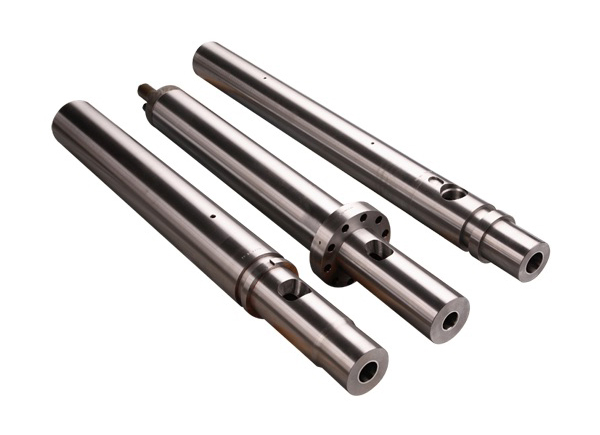Basic operation of single screw extruder
Screw extruder is divided into single screw extruder and multi screw extruder. Single screw extruder is one of the most important extruders in polymer industry. Its main advantages are low cost, simple design, strong and reliable, and satisfactory performance cost ratio. The screw of conventional plasticizing extruder has three different geometric sections
This geometry is also known as "single stage.". "Single stage" refers to the fact that although the screw has three different geometric sections, there is only one compression section. The groove of the first section (closest to the feed inlet) is generally deep. Most of the materials in this section are in solid state. This section is called the feeding section of the screw. The groove in the last section (closest to the die head) is usually shallow. Most of the materials in this section are molten. This cicada rod section is called metering section or extrusion section. The second section connects the feeding section and the metering section. This section is called transition section or compression section. In most cases, the depth of the screw groove (or the height of the screw edge) decreases linearly from the feeding section to the metering section, thus causing the material to undergo compression in the screw groove. It will be proved that this compression is essential for the correct operation of the extruder in most cases.
Basic operation:
The operation of single screw extruder is quite simple. The material enters from the hopper. Usually, the material flows into the extruder barrel from the hopper by gravity. Some materials are not easy to flow in the dry state, so special measures must be taken to prevent materials from hanging in the feed hopper. Once the material falls into the extruder barrel, it is in the annular space between the extruder screw and barrel, and then surrounded by the active belly and passive belly grooves. The machine is still and the cicada pole is rotating. Therefore, the friction force acts on the material, barrel and screw surface. At least the material is in a solid state (below the melting point), and these frictions are responsible for transporting the material forward.
When the material moves forward, it is heated due to the heat generated by friction and the heat conducted by the barrel heater. When the temperature of the material exceeds its melting point, a molten film forms on the inner surface of the barrel, and the plasticizing section begins. It must be pointed out that the starting point of plasticizing section is usually not the starting point of compression section. The dividing line of each functional segment depends on polymer properties, extruder geometry and operating conditions. Therefore, the dividing line can be changed with the change of operating conditions. However, the geometry of the screw is determined by the design and does not vary with operating conditions. When the material moves forward, the amount of solid material in each position will be reduced due to melting. When all the solid polymer disappears, it reaches the end of plasticizing section and the melt conveying section begins. In the solid conveying section, the melt is uniformly conveyed to the die head.
When the polymer flows into the die, it presents the shape of the die channel. Therefore, when the polymer leaves the die, its shape more or less conforms to the cross-section shape of the last part of the die channel. Due to the flow resistance of the die head, pressure is needed to force the material through the die head. This pressure is usually called die pressure. Die pressure is determined by die shape (especially flow channel), polymer melt temperature, flow rate through die and rheological properties of polymer melt. The die pressure is produced by the die and not by the extruder. The extruder just produces enough pressure to force the material through the die. If the polymer, extrusion quantity, die head and die head temperature are all the same, no matter the extruder is gear pump single screw extruder or double screw extruder, there will be no difference, and the head force is the same. Therefore, the die pressure is caused by the pressure on the die.

Zhoushan Tianxiang Screw Manufacturing Factory is a famous China Injection Molding Screws Barrels Manufacturers,we are specializes in manufacturing all kinds of extrusion and injection molding rubber and plastic parts screw and barrel and product forming head accessories.

